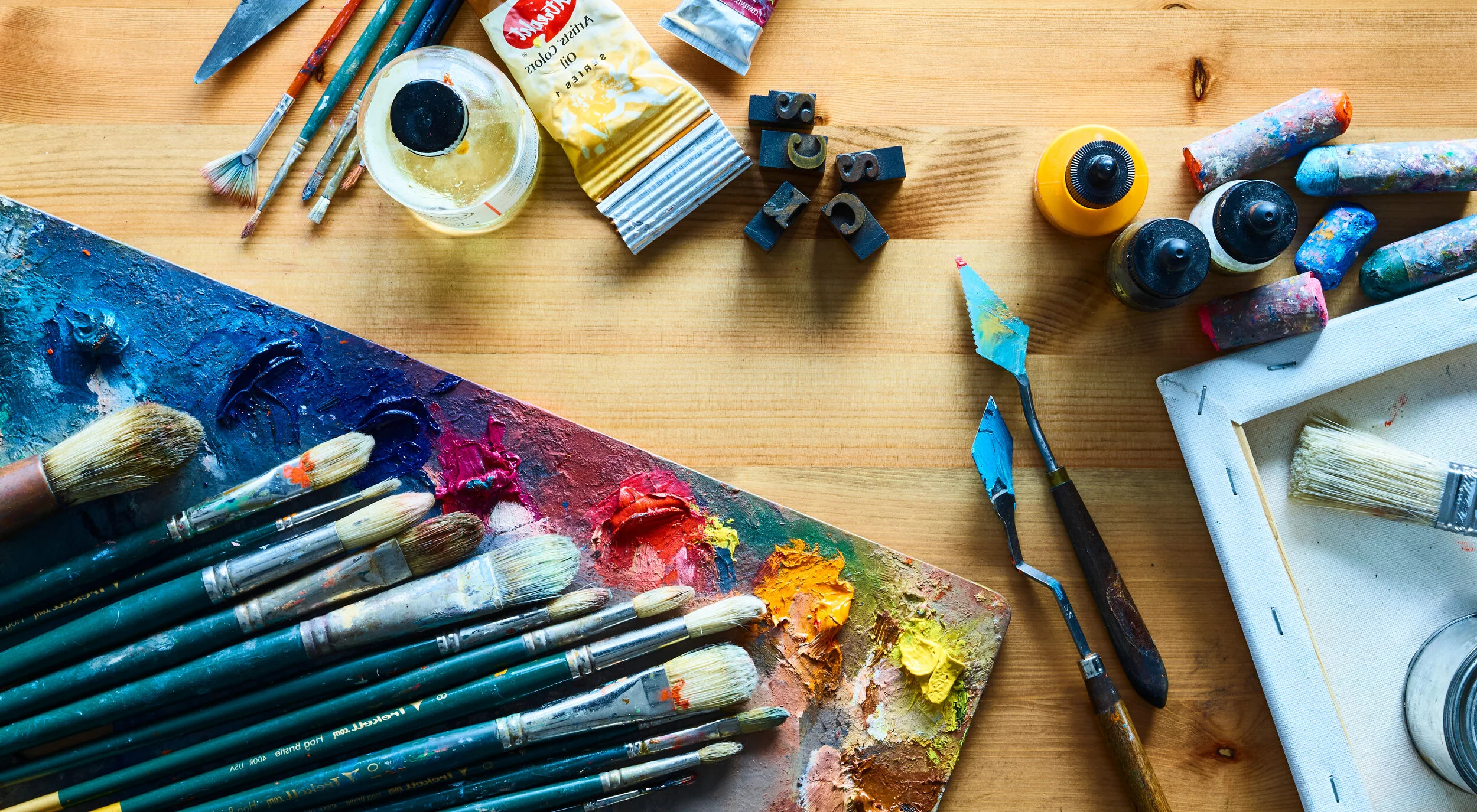
Children - Lesson 3: finding clues to ideas in art
Child
Hi. Think of the last drawing you made: what was it about? Perhaps you were trying to describe something you saw or imagined. Professional artists are often trying for something more. They want to communicate an idea. How do they do that? As you look at art is there a way to find out what the artist’s thoughts were? At the end of this lesson, look at two videos that are cool examples of ideas in art.
Adult/Teacher
Hello. Hopefully, at the end of this lesson, you will have helped the child look at art work that attempts to express an idea. Guide him or her to an a-ha moment. This lessons uses the art of two extraordinary artists who cleverly embedded ideas into their greatest works.
Ideas in Art
What makes art become art? Ideas.
Children can find it difficult to put their ideas into the art they make. Many of them are inherently creative, however, and they often think in ways unencumbered by society’s expectations, but sometimes they are underexposed to art that puts ideas front and center. They may have a hard time “reading” art. Essentially, they don’t realize the full potential of what art can do. Using the techniques of Art Criticism, young children can look at art and objects with an eye toward interpretation in order to broaden their thinking. Afterwards, when they try to express themselves in art making, they will approach the creative process more conceptually.
Take a couple of well-known paintings as examples of thinking art.
The Golden Rule, by Norman Rockwell
The first is a painting, The Golden Rule, by Norman Rockwell. It is an oil on canvas, 44.5 x 39.5 inches, and it became the cover illustration for The Saturday Evening Post, April 1, 1961. Rockwell had made a drawing about the United Nations that he had never finished. He returned to the idea of people of the world years later in order to make a statement about different religions, races, and ethnicities in the world. Watch with the child a short behind-the-scenes video created by the Norman Rockwell Museum.
Ask the child to look at the image and answer this question: Who are the people in this picture? You might need to help identify some of the clues.
Next, have another discussion with the child about the concept of placing ideas in a painting. How can an art work or object tell a story? Why are the separate clues important?
These are great questions because many children are attempting to tell stories in their own work. Often the viewers of their works want the child to interpret the art, but there is power in knowing that an art work can provide enough information to let the viewer interpret it for himself or herself. The concept that they can place clues into their own work to help viewers find deeper meanings can be powerfully insightful.
The impact of The Golden Rule is Norman Rockwell’s ability to capture the humanity of diverse peoples coming together. Rockwell’s research into religions of the world showed him that the principles of the Golden Rule are present in nearly every religion. Respect for each other is a universal belief. The painting itself is technically accomplished, balanced, well-executed, but it’s the concept of the painting that elevates it to something special and memorable. Ideas make art into art.
Las Meninas by Diego Velásquez
One of the most celebrated paintings in the history of Western Art, Las Meninas, is full of clues that provide a viewer insight into the artist’s ideas. This painting from 1656 has captivated audiences for centuries and is universally acknowledged as a masterpiece. Take a look at the painting with a child and look closely. You may wish to watch this short video by yourself first, created by Sotheby’s, and then use concepts in it to discuss the painting with the child; or if your child is a bit older, he or she can watch the video with you.
Ask the child to identify the following:
The princess Margaret Theresa
Royal servants
Royal dog
The painter, Diego Velásquez
The mirror showing the king and queen of Spain
How do you know the answers? What information has Velásquez given you to know, for example, that he is a painter in the painting? (Clue: What is he holding?)
Many of the figures in the painting are looking at something. What is it? Why would everyone at the palace stop what they’re doing and look? What is it that they’re seeing?
Velásquez has provided the answer, but it’s not obvious. It points to the greatness of Velásquez and the way his complex ideas are just under the surface of his works. The answer to the question, “What are they looking at?” can be found, not at the front of the painting, but at the back. The mirror to the left of the open door is the important clue.
Even if the child does not want to make art himself or herself, the moment when a child can look at art and discover something in it can change and elevate their life ever after.


